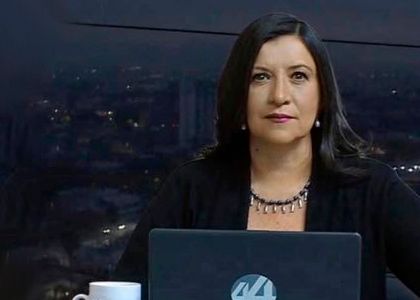Por Sonia Serrano Íñiguez
Desde hace algunos años circular por las calles de Guadalajara se convirtió en un infierno. Y cuando decimos Guadalajara hablamos de las calles del polígono que ya formaron al menos cinco municipios del Área Metropolitana, que son la misma capital de Jalisco, Zapopan, San Pedro Tlaquepaque, Tonalá y Tlajomulco de Zúñiga.
Recientemente la empresa estadounidense Inrix publicó su estudio sobre el tráfico en las principales ciudades del mundo durante 2022. Para Guadalajara, el resultado señala que sus habitantes pierden en promedio 52 horas al año en el auto. Imaginen, más de dos días y medio de su vida desperdiciados en el tráfico.
En el mismo estudio se señala que la velocidad a la que se puede circular en la ciudad disminuyó de 37 a 32 kilómetros por hora en horas pico y de 48 a 41 kilómetros por hora en el resto del día. De hecho, la diferencia entre horas pico y horas valle prácticamente se diluyó. A cualquier hora es complicado trasladarse.
Los factores que han llevado a la ciudad a esta parálisis son diversos. El primero de ellos, el incremento en el número de automóviles ante la incapacidad de la autoridad de ofrecer alternativas para trasladarse.
Hace 20 años en la Zona Metropolitana de Guadalajara (ZMG) había cuatro personas por cada auto; veinte años después, el número de automotores creció más que la población y los registros marcan que por cada carro hay dos habitantes.
Según datos del Censo 2000 del Instituto Nacional de Estadística y Geografía (Inegi), en ese entonces la población de Guadalajara, Zapopan, San Pedro Tlaquepaque, Tonalá y Tlajomulco de Zúñiga era de 3.5 millones de personas. En ese mismo año en los cinco municipios había 830 mil 843 automotores registrados, por lo que por cada vehículo había 4.3 habitantes en promedio.
Los datos del último censo, el de 2020, confirman que en las últimas dos décadas se incorporaron más automotores que personas a la ciudad, ya que mientras los habitantes llegaron a 4.8 millones, los vehículos registrados superaron los 2.4 millones. Ello representa menos de dos personas por cada vehículo.
Las autoridades no han puesto en marcha políticas efectivas que permitan renunciar al automóvil particular. El sistema de transporte masivo ha crecido lentamente, pues la ciudad apenas cuenta con tres líneas de tren ligero y dos de BRT,
claramente insuficientes.
En cuanto al transporte público convencional, es concesionado a privados que deciden las rutas y número de unidades, en donde la premisa es que se garantice la ganancia. Así, hay importantes polígonos de la urbe que son atendidos con transporte no regulado como taxis pirata, mototaxis o camionetas sin permisos.
Además, en las “horas pico” las paradas de autobuses que conectan con el transporte masivo lucen largas filas en las que la espera puede superar una hora.
En cuanto al transporte de plataforma, al igual que en muchas ciudades, las autoridades han cedido a las presiones de los taxis convencionales. Para no aceptar plenamente los servicios de plataforma, dejan de vigilarlos.
Otro factor que ha sido determinante es el crecimiento del aparato burocrático en el gabinete estatal, lo que ha llevado a una distribución de las responsabilidades y decisiones en materia de movilidad en distintas dependencias.
Las tareas encomendadas en el gobierno anterior a la Secretaría de Movilidad ahora están dispersas y la falta de coordinación entre las diferentes áreas afecta directamente a los ciudadanos.
Mientras el Instituto de Planeación y Gestión del Desarrollo del Área Metropolitana de Guadalajara (Imeplan) se encarga de diseñar los planes, estos no se ven reflejados en la ejecución.
Es cierto que las actuales autoridades han apostado por la movilidad no motorizada con la construcción de ciclovías y ampliación de banquetas, pero la infraestructura se ha limitado a algunas zonas, dejando fuera al oriente, donde se ubican la mayoría de colonias populares. A esto hay que sumar la falta de articulación de las rutas para bicicleta y la inseguridad pública. También, con el pretexto de la construcción de ciclovías se han recortado los carriles para establecer más lugares de estacionamiento en la vía pública, ya que los gobiernos de Movimiento Ciudadano los concesionaron a una empresa privada.
Además, en el actual gobierno se decidió que la Policía Vial quedara sectorizada a la Secretaría de Seguridad Pública que, ante los altos niveles de inseguridad y violencia en el estado, la ha descuidado, por lo que encima tenemos un ambiente de total anarquía en calles y avenidas.
A todo esto se suma que el sistema de semáforos fue transferido a la Agencia Metropolitana de Infraestructura para la Movilidad, que dejó de sincronizarlos. Asi, podemos tener calles con unos cuantos autos en horas valle que deben pararse cada uno o dos semáforos, lo que en horas pico se traduce en verdadero caos.
Esta mezcla de decisiones y omisiones llevan a los tapatíos a dedicar hasta cuatro o cinco horas al día para sus traslados básicos. En general, moverse en Guadalajara es infernal
Las opiniones expresadas son responsabilidad de sus autoras y son absolutamente independientes a la postura y línea editorial de Opinión 51.
Más de 150 opiniones a través de 100 columnistas te esperan por menos de un libro al mes. Suscríbete a Opinión 51.






Comments ()